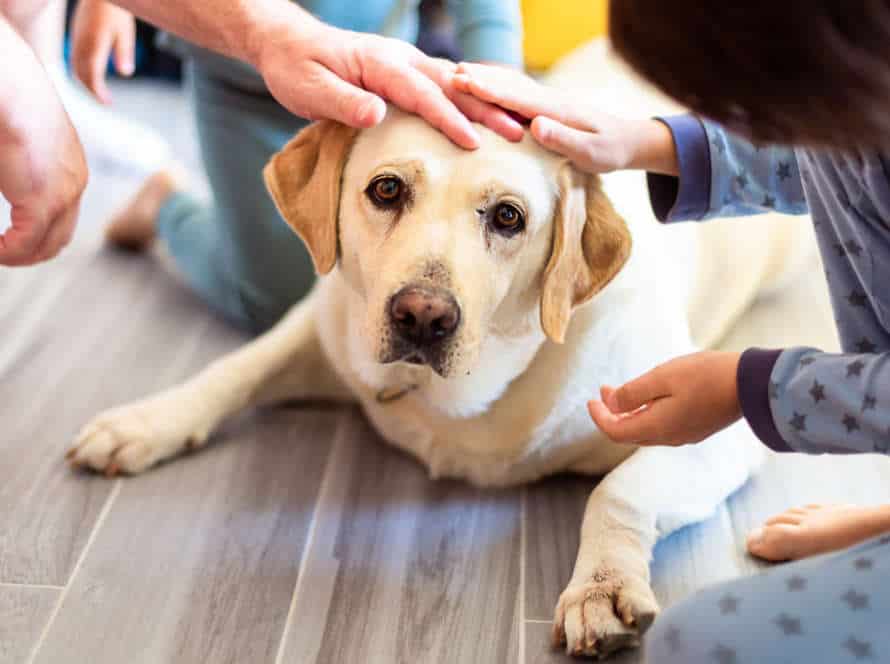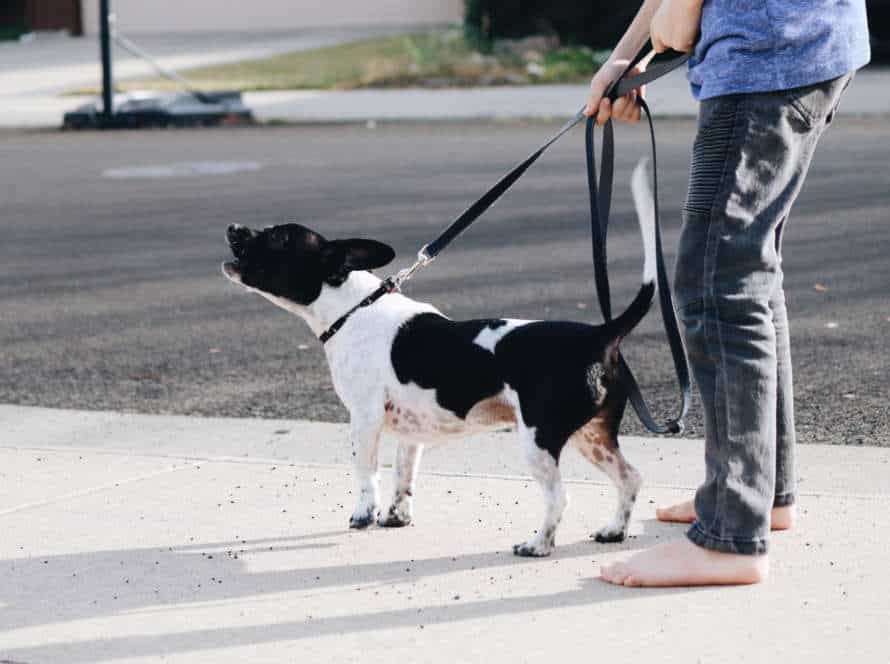The Benefits of Crate Training for Anxiety Prevention
Crate training can help reduce anxiety in dogs. It gives them a secure space to go to when they are feeling anxious. Here are some of the benefits:
- Provides a secure, familiar spot.
- Gives a sense of routine and structure.
- Stops destructive behaviors, like chewing furniture.
- Makes car rides and other activities less stressful.
Remember that it isn’t a punishment. Start with gradual, positive reinforcement-based training.
Pro Tip: Talk to a professional to make sure it’s okay for your pup and get tips on how to do it right.
Why Crate Training Works for Anxiety
Crate training is a great way to help your pet with anxiety. It gives them a safe and secure place to relax. The process involves introducing the crate slowly and encouraging your pet with rewards. Here’s why it’s beneficial:
- Anxiety prevention.
- Creates a better environment for your pet.
How Crate Training Mimics a Den
Crate training is like a den and gives dogs a safe, secure space. This can help with anxiety and other behavior problems.
Dogs are den animals and like closed spaces. A crate creates a sense of security and safety.
It can also help teach your dog about their bladder and bowels and make a routine. A dedicated, comfortable spot in your home can give your dog feelings of belonging and reduce destructive behavior.
Remember to never use the crate for punishment. Make sure it is the right size for your dog’s breed and age. The crate should be a positive and calming space.
Reducing Separation and Confinement Anxiety with Crate Training
Crate training is a good way to stop separation and confinement anxiety in dogs. When done correctly, it offers a safe and secure space for dogs during difficult times.
The benefits of crate training for anxiety prevention include:
- Creating a feeling of safety: A crate can provide a sense of safety and comfort for dogs. It can even become their own personal haven.
- Teaching good habits: Crate training helps dogs learn to keep their space clean and stay away from destructive behavior such as chewing and digging. This can be a cause of worry for both pets and owners.
- Reducing anxiety triggers: Crate training can help reduce anxiety triggers by providing a controlled environment. This makes it easier for the dog to manage their anxiety.
Remember to crate train with lots of rewards and praise for good behavior. Pro tip: Ask a dog trainer for personalised advice and help when crate training to manage anxiety.
Keeping Rescue and Shelter Dogs Comfortable with Crate Training
Crate training is a great way to keep rescue and shelter dogs at ease, and help them avoid anxiousness. Dogs are den animals and feel safe in tiny, closed areas. Here are some advantages of crate training for stressed-out pooches:
- Safe Place: Giving a dog a crate gives them a secure spot where they can escape, chill out, and feel defended when worried or scared.
- Reduced Anxiety: Being in a known environment and having a steady routine can help reduce stress and anxiety.
- Easier Adjustment to New Surroundings: Crate training can aid the pup adjust to new places and lessen any separation anxiety they may have.
Crate training calls for patience, consistency, and positive reinforcement. Step by step, extend the time the pup spends in the crate, and leave them with playthings and a comfy bed. Remember, the crate should never be used as punishment, and the dog shouldn’t be left in it for extended periods.
The Benefits of Crate Training
Crate training is a great help to any dog owner who wants to reduce their pup’s anxiety. It offers a secure, soothing environment. It also gives a physical and mental barrier stopping destructive behavior. With trained crate training, the result can be a permanent positive effect on behavior.
Let’s look at the advantages of crate training and how it reduces your pup’s anxiety.
Creating a Safe Space for Dogs in a Busy Home
Creating a safe space for your pup in a bustling home is key for their wellness. This can be easily done with crate training. It gives your dog a comfy and secure spot while avoiding destructive habits and stress. Here are some benefits of crate training for anxiety prevention:
- A crate provides a safe, familiar, and cozy environment for your doggo, which reduces their tension significantly.
- Crate training can thwart any destruction that could result from anxiety.
- Crating your canine pal will help them form a pattern, keeping them more peaceful.
- Putting your pup in the crate can give a visual barrier and block out extra noise, which can cause anxiety for some dogs.
Your pup’s crate should be a positive and cosy zone for them, with toys and water access. Don’t use it as a punishment and rather opt for positive reinforcement for crate training.
Pro Tip: Don’t leave your pup in the crate for too long and give them enough workout and playtime outside the crate.
Reduce Destructive Behaviors
Crate training is great for reducing destructive behaviours in dogs, especially when it comes to anxiety prevention. Here are the advantages of crate training for anxiety prevention:
- Safe Haven: A crate gives a feeling of security and a secure spot for dogs to retreat to, which can help them feel calmer and more relaxed.
- Separation Anxiety: Crate training can help dogs get used to being on their own, preventing separation anxiety.
- Less Destructive Behaviours: Crate training provides a safe, enclosed space, which can prevent biting, digging and peeing in the house.
- House Training: Crate training is very useful in teaching puppies bladder and bowel control and house training.
Pro Tip: When crate training, introduce it slowly and make sure your dog has enjoyable experiences with their crate. Add treats, toys or blankets to make it a pleasant and safe area.
More Effective House Training
Crate training is a house training technique that offers many benefits for both puppies and adult dogs, including reduced anxiety, fewer accidents and better behavior.
Here are the advantages of using this method for anxiety prevention:
- A crate gives dogs a secure and safe place to call their own, which can help reduce stress and anxiety.
- Crate training helps dogs learn to calm down and control their emotions by having a consistent routine and a peaceful atmosphere.
- A crate can stop destructive behavior and incidents due to separation anxiety or other stress-related issues.
- Crate training also makes dogs feel more relaxed when traveling or going somewhere new, since they have a familiar spot to relax in.
Pro tip: When crate training, it’s important to pick the right sized crate and never use it as a punishment.
How to Crate Train Your Dog
Crate-training your dog is mighty important! It gives them a sense of safety and can help them battle stress and anxiety. Here, we’ll cover the right approach for crate-training, as well as all the wonderful benefits.
Choosing the Right Crate Size
Choosing the perfect crate size for your pup is a must. It affects their coziness and safety. They should be able to stand, sit, turn around, and rest easily in their crate. Here are the steps:
- Measure your pup’s height from the floor to the top of their head and add a few inches.
- Then, measure their length from their nose to the base of their tail and add a few inches too.
- Choose a crate that matches these dimensions.
- If you have a puppy, take a crate that fits them when they’re fully grown. Meanwhile, use a divider to create a smaller area inside the crate.
The right size crate will keep your pup safe and comfy, reducing anxiety and boosting well-being. Pro tip: Introduce your pup to the crate gradually with positive reinforcement (treats, toys or puzzle feeders). And never use the crate to punish or isolate your pup when you’re mad or upset.
Introducing and Familiarizing Your Dog with the Crate
Introducing and familiarizing your pup with the crate is a must for successful crate training and to stop anxiety-related behaviors. Here’s how:
- Put the crate in a main place in the house and make it comfy with a bed or blanket.
- Leave the door open and put treats, food, and toys inside to attract them.
- Place treats and toys near the entrance to get them to explore.
- Praise and reward them with a treat when they enter.
- Slowly increase crate time and close the door while you’re home. Make sure your dog is relaxed before leaving them unattended.
- Doing this will make crate training positive, therefore calming anxiety-related behaviors.
Gradually Increasing the Amount of Crate Time
Gradually increasing crate time is a great way to train pup and avoid crate anxiety.
Do these steps:
- Start with brief intervals and reward your pet when they enter the crate on their own.
- Increase their crate time slowly, beginning with a few minutes and going up to a few hours.
- Put treats and toys in the crate to keep them busy.
- Provide access to water and let them go to the bathroom before crating for long.
- Show your dog love and get them plenty of exercise to prevent stress-related behavior.
Pro tip: Crate training should always be done in a positive manner, not to associate the crate with punishment or negative experiences.
Common Crate Training Problems
Crate training for anxiety prevention – great tool for pet owners! But, there can be issues. Difficulties getting pets to stay in the crate, destruction when left alone – these are common problems. Let’s investigate them!
Separation Anxiety during Crate Training
Separation anxiety is a common concern during crate training, but it has lots of advantages for anxiety prevention in dogs. Here are some tips to overcome it:
- Start small: Begin by leaving the pup in the crate briefly and slowly increase that time.
- Make it positive: Make sure your dog associates its crate with something positive, like treats and praise.
- Give exercise: A tired dog is more likely to rest and snooze during crate time.
- Provide an interactive toy with treats: This gives mental stimulation and keeps your pup busy.
Remember! Crate training can help prevent anxiety in dogs by giving them a secure area to relax when feeling overwhelmed or stressed. This makes them feel calmer.
Whining or Barking in the Crate
Whining or barking in the crate is a common issue during crate training. However, with patience and consistency, this can be overcome! Here are some tips for you:
- Exercise and play with your dog before crating them to reduce restlessness.
- Place a few favorite toys, a cozy blanket, or an item of your clothing in the crate. This will provide a sense of comfort and familiarity.
- Do not show anger or frustration towards your dog. Instead, use positive reinforcement, like treats and praise, to encourage quiet crate behavior.
- Start with just a few minutes in the crate and gradually increase the amount of time.
In the long run, crate training has many benefits. These include preventing anxiety, providing a safe and comfortable space, and making travel easier with your pet. Patience, consistency, and positivity are essential for successful crate training.
Escaping or Fear of the Crate
Crate training is super useful for managing canine anxiety or stopping bad habits. But, sometimes, pups can become scared of the crate due to bad experiences or improper training. This fear can result in behavior problems, like crying, whining, barking, or even aggression.
Here are some tips to help your pup get over their fear of the crate:
- Introduce your pup gradually and positively, using treats and praise.
- Make the crate comfortable with nice bedding, toys, and familiar smells.
- Don’t use the crate as punishment, and never force your pup in.
- Ensure your pup gets exercise and mental stimulation before crating them.
- If your pup’s fear is severe, consider getting help from a certified trainer or behaviorist.
Crate training, done right, can have benefits for anxiety prevention. It gives your pup a secure place to go in times of stress. With patience and positive reinforcement, you can help your pup create a healthy relationship with their crate, reducing escape attempts and anxiety-related behaviors.
Conclusion: The Long-Term Benefits of Crate Training for Dogs
Crate training is a humane and effective method of preventing anxiety in dogs, with lots of long-term advantages.
The benefits include:
- Safety – The crate offers a secure area for the pup to go when anxious, protecting them and your property.
- Comfort – Dogs are den animals and love enclosed places. The crate gives a comfy, familiar atmosphere where they can relax.
- Predictability – A regular and predictable atmosphere helps reduce anxiety in dogs. A crate offers a consistent area to rest and sleep, aiding them to feel safe.
- Enforce Positive Behaviors – Using a crate for short periods reinforces positive behaviors, like potty training and stopping destructive behavior when alone.
By crate training your dog, you’re investing in their long-term wellbeing. You’re offering a secure, comfortable, and predictable environment for them to prosper in.
Frequently Asked Questions
1. What is crate training?
Crate training involves using a crate or a kennel as a space for your dog to stay and sleep in. The crate is often used for house training and can also be used as a tool to reduce anxiety in dogs.
2. How does crate training help prevent anxiety in dogs?
The crate provides a safe and comfortable space for your dog to retreat to when feeling anxious or stressed. It can give your dog a sense of security, and help them relax in potentially stressful situations, such as when left alone or during thunderstorms.
3. Can crate training be used for all dogs?
While crate training can be beneficial for many dogs, it may not be appropriate for all dogs. It’s important to consider your dog’s temperament, age, and individual needs before deciding to crate train.
4. Is crate training cruel?
When done correctly, crate training is not cruel. It provides a safe and comfortable space for your dog, and can actually reduce anxiety and improve behavior in dogs. It’s important to never use the crate as a form of punishment or leave your dog in the crate for extended periods of time.
5. How long does it take to crate train a dog?
The length of time it takes to crate train a dog can vary depending on the dog and their temperament. Some dogs may take a few days, while others may take several weeks. Consistency and positive reinforcement are key to successful crate training.
6. What are the long-term benefits of crate training?
Crate training can provide long-term benefits for both you and your dog. It can help prevent anxiety and destructive behavior, and make traveling with your dog easier and less stressful. It can also provide a safe and comfortable space for your dog to retreat to throughout their life.







